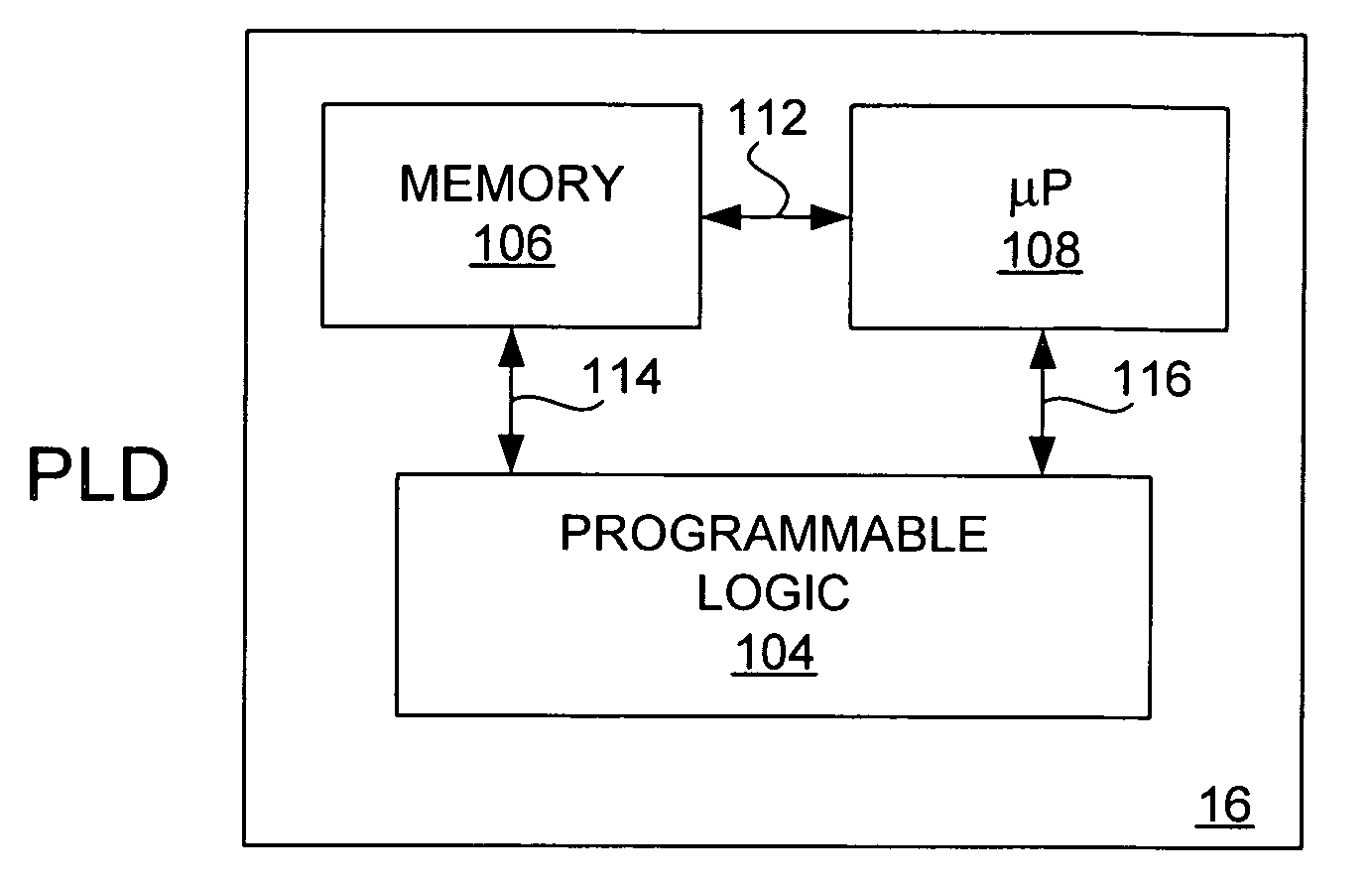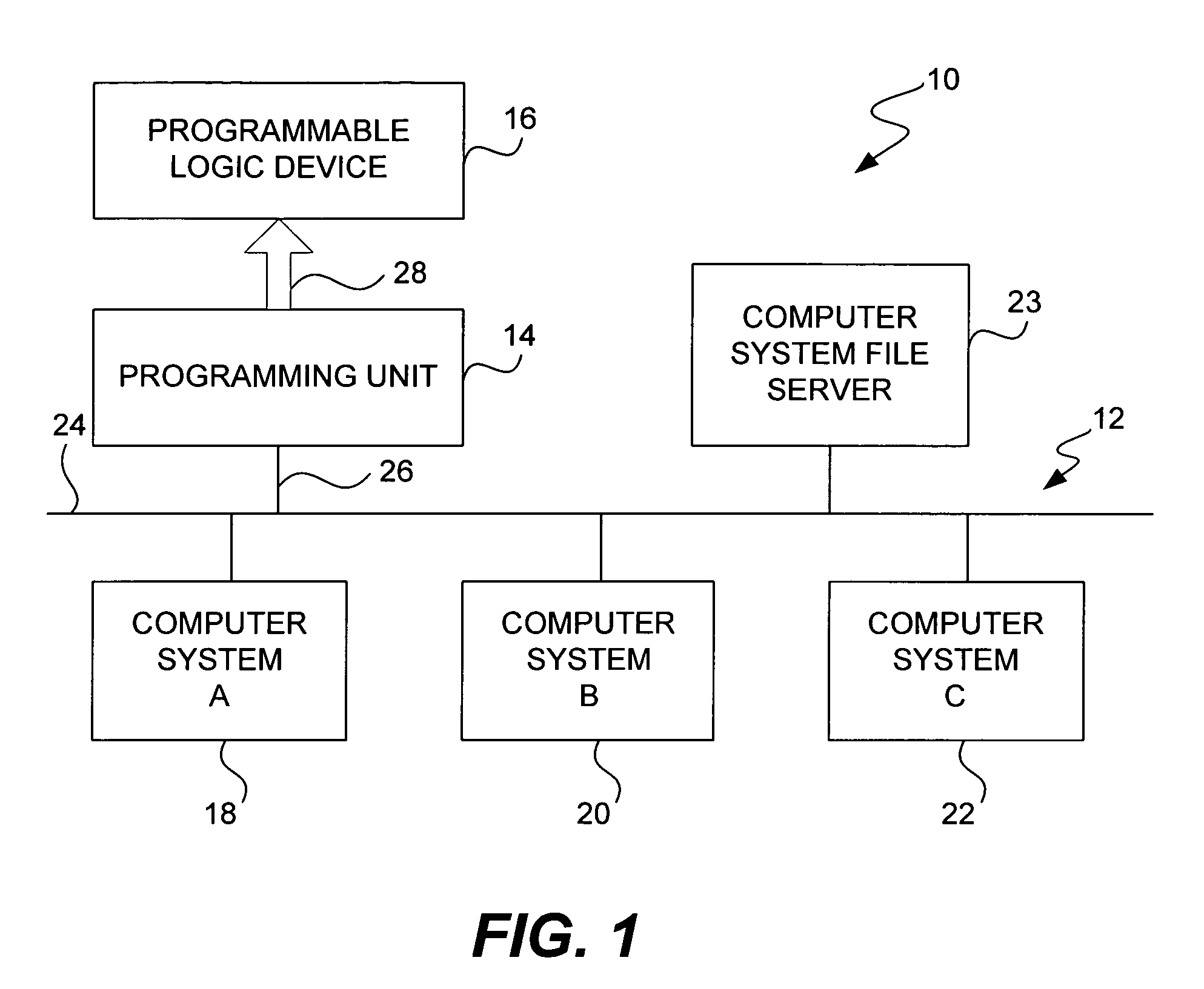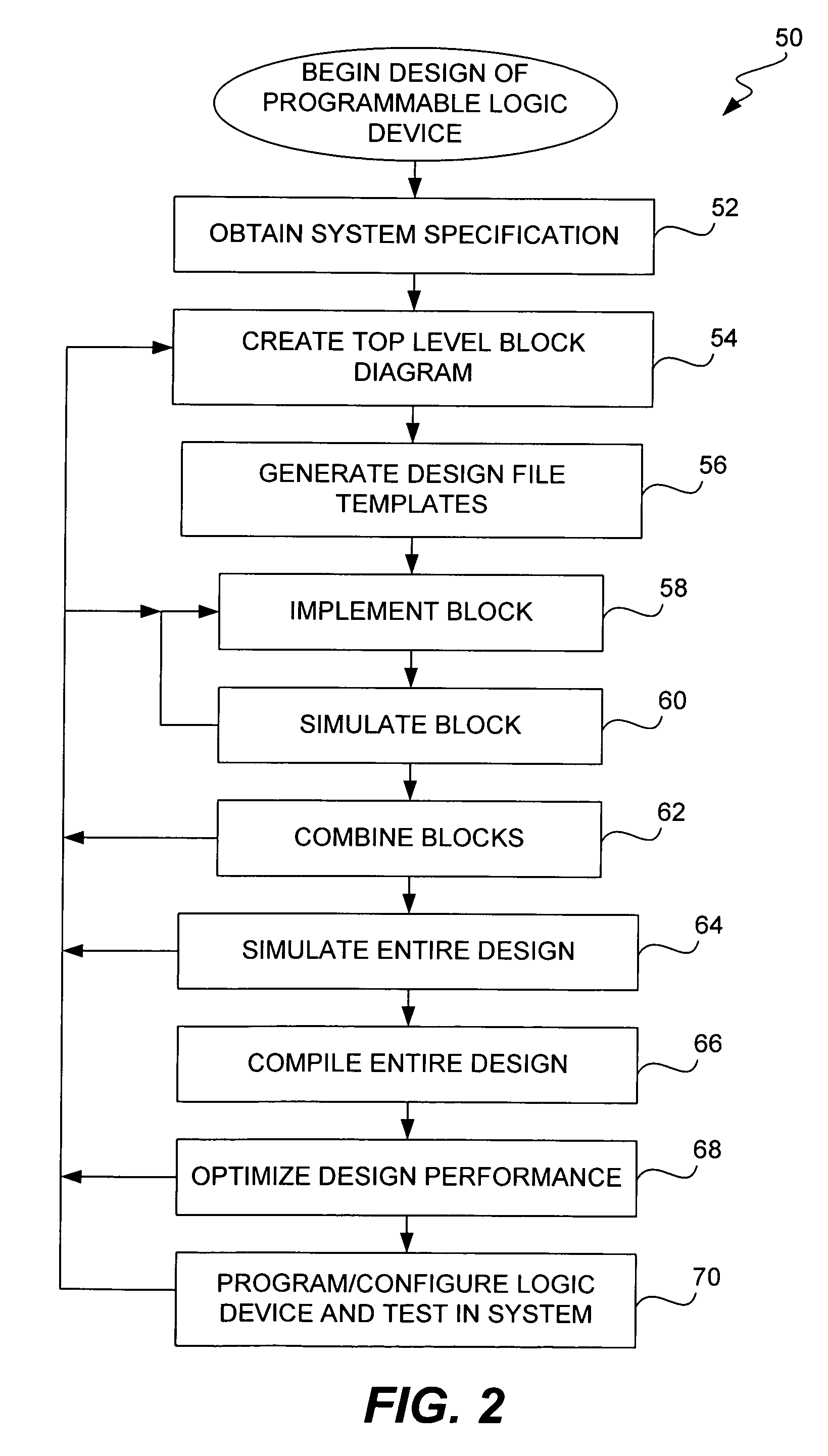Embedded microprocessor for integrated circuit testing and debugging
- Summary
- Abstract
- Description
- Claims
- Application Information
AI Technical Summary
Benefits of technology
Problems solved by technology
Method used
Image
Examples
Embodiment Construction
[0023]The present invention is applicable to both the testing and debugging of integrated circuits (devices). Testing of an integrated circuit is performed by the device manufacturer before the device is shipped to a customer, and typically uses a test system. Debugging of the device is performed by the customer who has placed their design onto the device, and who desires to check its functionality before shipping it out as a final product. Debugging is typically controlled by a customer host computer, as is known in the art. In order to develop an electronic design for programming a hardware device, a programmable logic development system is used. As explained above, the present invention is applicable to many types of integrated circuits; the below discussion refers to a “PLD” for ease of explanation.
Programmable Logic Development System
[0024]FIG. 1 is a block diagram of an embodiment of a programmable logic development system 10 that includes a computer network 12, a programming ...
PUM
 Login to View More
Login to View More Abstract
Description
Claims
Application Information
 Login to View More
Login to View More - R&D Engineer
- R&D Manager
- IP Professional
- Industry Leading Data Capabilities
- Powerful AI technology
- Patent DNA Extraction
Browse by: Latest US Patents, China's latest patents, Technical Efficacy Thesaurus, Application Domain, Technology Topic, Popular Technical Reports.
© 2024 PatSnap. All rights reserved.Legal|Privacy policy|Modern Slavery Act Transparency Statement|Sitemap|About US| Contact US: help@patsnap.com










